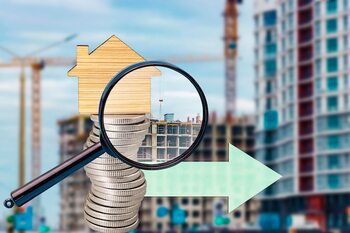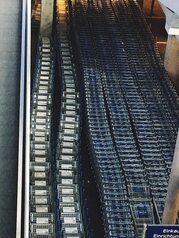Neighborhood interconnection and its effect on real estate appreciation.

Neighborhood interconnection is more than just coexistence; it is a catalyst that can elevate real estate value in a community. In this article, we will explore how relationships between neighbors, social engagement, and collaboration can transform not only the atmosphere of a neighborhood but also its market value. Discover how fostering these connections can be key to enhancing your investment and enjoying a more harmonious and attractive environment.
The importance of social cohesion in increasing property value.
Social cohesion plays a fundamental role in increasing property values, as it creates a safer and more attractive environment for potential buyers. When neighbors develop strong relationships with each other, a sense of belonging and collective responsibility is fostered, which can translate into greater vigilance and care for the neighborhood. This atmosphere of trust not only enhances the quality of life for residents but also becomes a decisive factor for those looking to purchase properties. Neighborhoods with active community participation tend to be perceived as more desirable, which directly impacts their valuation.
Moreover, social cohesion facilitates the organization of community activities and events that strengthen interaction among neighbors, creating a vibrant local culture. These interactions not only enhance the daily experience of living in the neighborhood but can also lead to collective improvements in infrastructure and services. By working together towards common goals, such as the creation of green spaces or the implementation of neighborhood safety programs, residents can significantly increase the area's appeal to future buyers. All of this contributes to consolidating a dynamic real estate market where properties maintain or increase their value due to shared social commitment.
2. Community events: A bridge to real estate appreciation
Community events act as a powerful catalyst for real estate appreciation, as they create a sense of belonging and cohesion among neighbors. By organizing activities such as fairs, local markets, festivals, and neighborhood meetings, interaction and dialogue among residents are encouraged. This collaborative environment not only enriches the experience of living in the community but also attracts potential new buyers who are looking for a vibrant and welcoming setting. When people see that an area is socially active, they tend to place a higher value on available properties, which translates into an increase in real estate value.
Additionally, these events are an excellent opportunity to highlight the unique characteristics of a neighborhood. By involving small local businesses and emerging artists, community events can showcase the talent and creativity that reside within the area. This not only enhances the quality of life for current residents but can also attract additional investments to the real estate sector. The positive perception generated by these initiatives can make the neighborhood more appealing to those interested in buying or investing in properties, thus contributing to the sustainable growth of real estate value in the long term.
3. Collaborative projects: Improving shared spaces and raising prices
Collaborative projects among neighbors are a powerful tool to revitalize shared spaces while also increasing property value in the area. Initiatives such as community gardens, urban gardens, or jointly built recreational areas not only foster a sense of belonging and social cohesion but also visually transform the environment. These improved spaces become meeting points that attract new residents and investors, thus increasing real estate demand and, consequently, prices. The active participation of neighbors in these projects creates a more attractive and safe environment, benefiting both current homeowners and those looking to move into the neighborhood.
Moreover, the success of these collaborative projects lies in the ability to unite different perspectives and skills within the community. Each neighbor can contribute their unique talent: from manual skills to knowledge in gardening or urban design. This collective approach not only improves the neighborhood's infrastructure but also generates a sense of pride and shared responsibility among the residents. As these initiatives thrive and become visible, communities manage to attract greater media attention and public recognition, which helps to solidify their reputation as desirable places to live. Ultimately, these joint efforts not only enrich the local quality of life but also act as engines to significantly increase the real estate value of the area.
4. Neighborhood social networks: How digital connectivity impacts the local area
Neighborhood social networks have emerged as powerful tools to strengthen the interconnection among residents of the same community. Platforms like Nextdoor or Facebook groups dedicated to specific neighborhoods allow neighbors to communicate effectively, sharing information about local events, recommended services, and common concerns. This digital interaction not only fosters a sense of belonging and support among neighbors but also creates a space where community issues can be addressed collaboratively. By improving communication, a network of trust is established that can translate into joint actions to beautify the environment or create initiatives that benefit everyone.
Furthermore, when communities are active on these digital platforms, they are more likely to attract the attention of potential buyers and investors. A neighborhood where residents show interest and commitment to their surroundings through social media can be perceived as safer and more vibrant. This can lead to an increase in real estate demand, which positively impacts the area's property value. In this sense, neighborhood social networks not only facilitate connections between people; they also play a fundamental role in building a positive image of the neighborhood in the real estate market, making it a desirable place to live and invest.
5. Security and trust: The effect of neighboring ties on real estate investment
The security and trust that are generated through strong ties between neighbors play a crucial role in the value of a property. When residents of a neighborhood know and trust each other, an environment is created where mutual vigilance and community care are the norm. This sense of community not only deters criminal activities but also fosters a culture of support and assistance among the inhabitants. As a result, properties located in areas with strong neighborhood bonds tend to maintain their value and even appreciate more quickly than those in less connected communities.
Additionally, the perception of safety significantly influences purchasing or renting decisions. Potential buyers often prioritize neighborhoods where they feel their families will be safe and protected. Close relationships among neighbors can be a key indicator of this safety, as cohesive communities are usually better equipped to address local issues and organize activities that promote common well-being. Consequently, investing in areas with a strong neighborhood network is not only emotionally appealing but also represents a smart strategy for ensuring good long-term returns in the real estate market.
6. Testimonials from successful communities: Real cases of added value through interconnection
Neighborhood interconnection has proven to be a determining factor in the increase of property value in various communities around the world. For example, in a neighborhood in a medium-sized city, a group of neighbors organized to revitalize public spaces and promote community activities. Through events like craft fairs and cleaning days, they not only improved the aesthetics of the area but also attracted new residents and investors. As a result, property prices increased considerably in just a few years, demonstrating how collaboration can translate into tangible economic benefits for all. Another successful case can be observed in a community that implemented a "time bank" system, where neighbors exchanged skills and services. This approach not only strengthened interpersonal relationships but also created a sense of belonging and pride in the neighborhood. The improvement in quality of life led more people to want to move there, which raised real estate demand and, consequently, market prices. These testimonials highlight how interconnection among neighbors not only creates stronger bonds but is also an effective driver for increasing the property value of an area.
7. The influence of neighborhood associations on urban policies and local development
Neighborhood associations play a crucial role in creating urban policies that reflect the needs and desires of the community. By coming together, residents can articulate their concerns and proposals more effectively, giving them a meaningful voice in the decision-making process. These organizations not only promote a sense of belonging but also advocate for improvements in infrastructure, safety, and public services, elements that are fundamental to enhancing real estate value. When changes are implemented based on these community initiatives, the neighborhood's appeal increases, which can translate into a significant rise in property values.
Additionally, neighborhood associations have the power to encourage citizen participation and create bonds among neighbors, which is essential for developing a healthy and collaborative environment. Through community events, workshops, and recreational activities, these groups not only strengthen social cohesion but also promote a positive image of the neighborhood to potential buyers and investors. An active and well-coordinated environment can be perceived as safer and more accessible, thereby attracting new residents interested in purchasing properties in an area with a high quality of life. With each collective action taken by neighbors, the seeds for sustainable local development that benefits everyone are sown.
8. Community education: Investing in knowledge to increase added value.
Community education is a fundamental pillar for the development of any neighborhood, as it not only promotes learning and skill development but also strengthens the bonds among its members. By investing in educational programs, workshops, and collaborative activities, a sense of belonging and empowerment within the community is fostered. These types of initiatives not only enrich individuals but also create an environment conducive to personal and collective growth, which directly impacts the perception of the neighborhood's value among potential buyers and investors.
Additionally, a well-educated community tends to take better care of its environment and actively engage in its improvement. Participation in community projects, such as urban gardens or cleanup campaigns, not only beautifies the area but also creates a shared pride among residents. This positive transformation can attract new tenants or homeowners interested in settling in a place where knowledge and collaboration are valued. At the end of the day, an investment in community education is an investment in property value; the stronger the connection between neighbors and the greater their commitment to collective learning, the more attractive the neighborhood will be from a real estate perspective.
9. Green spaces and common areas: Creating an attractive environment for buyers
Green spaces and common areas are essential elements that not only beautify a neighborhood but also encourage interaction among residents. By providing places where families can gather, children can play, and adults can socialize, a sense of community is created that can be very appealing to potential buyers. These areas can include parks, community gardens, or playgrounds, where activities are organized that strengthen social cohesion. A well-maintained and accessible environment invites neighbors to share experiences and build lasting relationships, which is fundamental in the development of effective neighborhood interconnection.
In addition to its social impact, the presence of green spaces significantly contributes to the real estate value of an area. Properties near well-maintained common areas tend to have higher demand in the market. Buyers are looking for not just a home, but also a lifestyle that includes access to nature and recreational spaces. This appeal can translate into a faster appreciation of property values and a more secure long-term investment. Therefore, investing in the development and maintenance of these spaces is not only beneficial for the quality of life of current residents but also for those who wish to settle in the community in the future.
10. Strategies to foster lasting and effective neighborhood relationships
Fostering lasting and effective neighborly relationships begins with creating common spaces where neighbors can interact. Organizing community events such as fairs, picnics, or outdoor movie nights is an excellent way to break the ice and promote a sense of belonging. These activities not only allow people to get to know each other better but also create a welcoming environment where everyone feels valued and included. Additionally, collaborating on local projects, such as community gardening or park clean-ups, can strengthen cohesion among residents and generate a shared commitment to the well-being of the neighborhood.
Open communication is another fundamental pillar for fostering effective relationships among neighbors. Creating a group on social media or a mailing list can facilitate the exchange of relevant information, from notices about events to alerts about issues in the community. These types of platforms not only allow residents to stay informed but also promote a sense of mutual support during difficult times. By establishing effective channels for sharing ideas and concerns, neighbors can collaborate to resolve conflicts and work together towards common goals, which in turn enhances the positive perception of the neighborhood and its real estate value.



